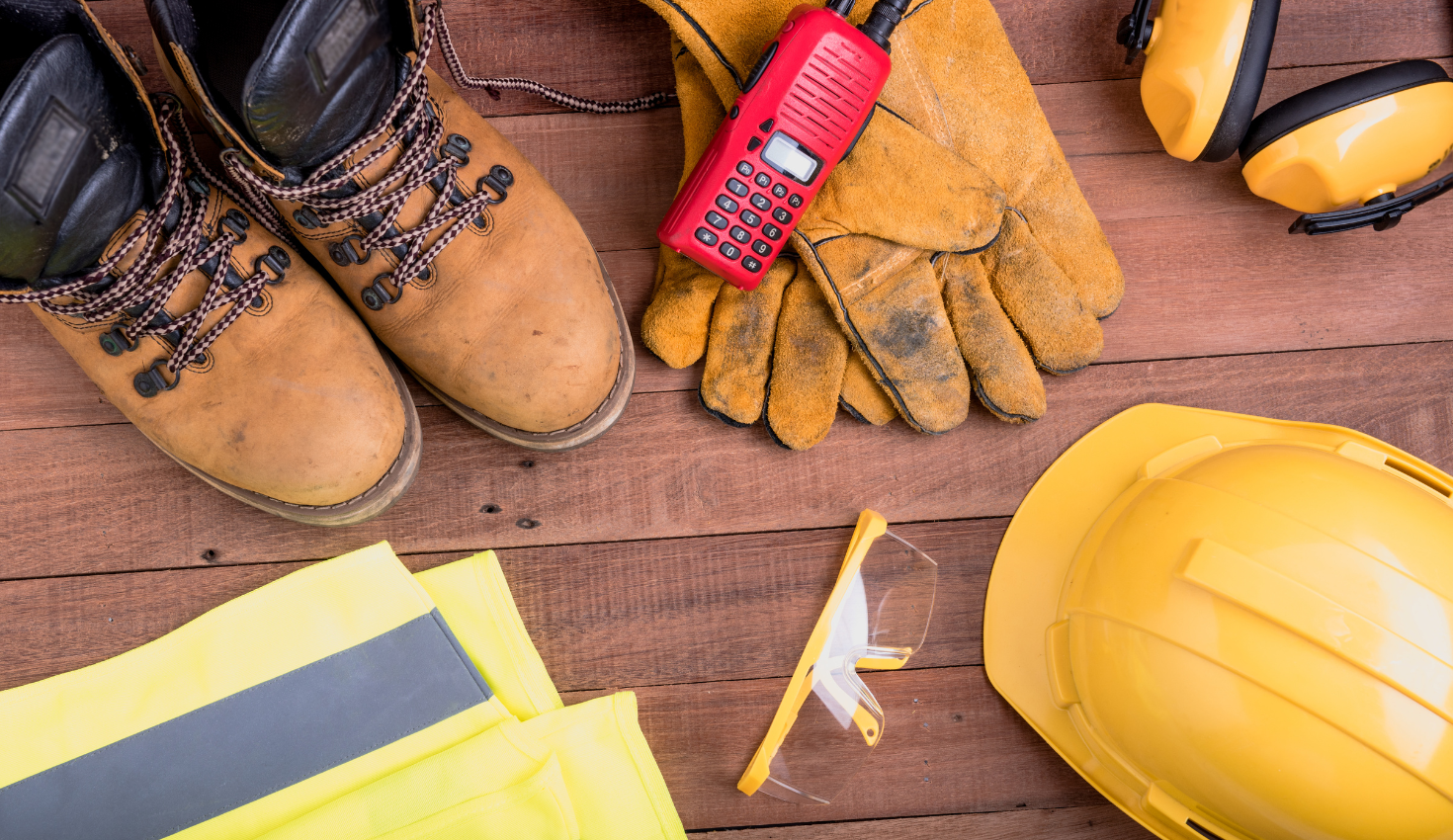
Need assistance?
Need Assistance? Call Us 0330 058 0631





















 Book a service
Book a service

05/11/2024 • by Chris Bird

PPE, or personal protective equipment, is all equipment (including clothing) designed to minimise the person at work’s exposure to potential hazards.
In the Hierarchy of Controls, PPE is the final step. This means, PPE only becomes a regular practice when the hazard or risk cannot be removed. If a worker must interact with potential danger, they must have PPE equipment ready to keep them safe. It is important to remember that PPE only protects the wearer. Alongside providing PPE, steps should be taken to minimise the danger of the hazard/risk that has forced PPE to be introduced in the first place.
Providing PPE equipment is essential, and supervisors must understand the importance of PPE to keep their workers safe. Workers must also report potential hazards as and when they are encountered so that PPE can be adapted to fit the worker’s needs. PPE can be understood as a proactive step to keeping workers safe. However, the rules for PPE can vary depending on the risk and the environments the workers are in. This blog will break down what clothing items count as PPE equipment, how PPE protects different areas of the body, the importance of PPE and the legalities surrounding it.

The goal of PPE workwear is to create a protective physical barrier against potential harm. Suppliers must provide workers with well-fitting, undamaged clothing especially made to handle the wear and tear of dangerous chemicals, gases, liquids, weather and other impact hazards.
PPE can encompass every part of the body - from the eyes and ears to the feet. PPE equipment must be adapted to meet the worker’s needs. PPE must also be regularly inspected for damage. If the PPE equipment does become damaged from wear and tear it will no longer protect the wearer. Additionally, PPE must fit the wearer. If goggles are loose on the face, they will not protect the eyes. If safety boots slip off the feet, they will not protect the wearer’s foot etc. The goal of PPE workwear is to create a protective physical barrier against potential harm. Suppliers must provide workers with well-fitting, undamaged clothing especially made to handle the wear and tear of dangerous chemicals, gases, liquids, weather and other impact hazards.
PPE can encompass every part of the body - from the eyes and ears to the feet. PPE equipment must be adapted to meet the worker’s needs. PPE must also be regularly inspected for damage. If the PPE equipment does become damaged from wear and tear it will no longer protect the wearer. Additionally, PPE must fit the wearer. If goggles are loose on the face, they will not protect the eyes. If safety boots slip off the feet, they will not protect the wearer’s foot etc.
.png)
Understanding donning and doffing PPE is also an important practice. Good practice before putting on PPE equipment is –
Remove any jewellery
Tying back hair
Ensuring that the PPE equipment correctly fits
When putting on PPE, make sure you –
Wash hands and wrists with clean, soapy water or use alcohol-based wipes, hand rub or gel
Select the correct PPE equipment to fit the job
Correctly fit the uniform to the wearer, ensuring equipment is tight and undamaged
When removing PPE the process involves washing hands and wrists between each step of the removal process (again clean with soapy water or alcohol-based gel/wipes). It is incredibly important not to contaminate any areas of the self, others or the areas of the PPE equipment that have not been exposed to the hazard (for example, the inside of the apron). Keeping hands (which will have the most contact) as clean as possible ensures no contamination. It is also important to remove masks by the ear loops not by touching the front of the mask.

Goggles, safety glasses – In a laboratory, handling dangerous liquids or machinery is common practice. This means having a physical barrier to protect the eyes is vital. Goggles prevent splash hazards. Eye protection PPE also protects against corrosive liquids, irritating mists and harmful fumes.
Safety helmets (hair nets and hard hats/bump hats) – Working on construction sites can be incredibly dangerous. Not only is there a risk of falling objects but building work may happen at a height. If a worker does fall or if an object does fall onto them, having their head protected is a must. Head injuries are one of the biggest risks and carry the most severe repercussions. Head protection PPE is vital to protect workers from serious harm.
Gloves (puncture resistant) – handling dangerous liquids will always come with a risk, no matter how careful you are. Hand protection PPE creates a physical barrier to prevent contact. In a kitchen which uses hot oil, wearing PPE for oil burns is important. Not only does it protect the wearer from harm, but it allows them extra time to respond calmly to the danger and to get help.
Masks and face shields – Chemical splashes, sparks, radiation and hurtling debris can all cause serious harm to a worker. Face protection PPE keeps the face safe with a barrier to allow the worker to work safely.
Earplugs and earmuffs – Tinnitus and even permanent hearing loss can be very real risks. Working in a loud environment will always carry the risk of damaging hearing. Regardless of how long you are exposed to loud volumes or for what frequency, loud environments can and do cause hearing problems. Earplugs protect the ears by alleviating the stress on hearing that loud environments cause. Alongside this, loud environments can increase stress levels leading to panicked responses and irrational reaction levels. Earplugs can soften these effects and allow the wearer to work calmly in a loud environment.
Safety footwear – PPE comes in all forms, including footwear. When working in an environment that is slippery or covered in dangerous rubble wearing the correct footwear is important to prevent injury. Additionally, PPE footwear can provide the wearer with needed water-resistance, impact-resistance or slip-resistance.
High visibility vests, lab coats, flame-retardant, rain gear - Body protection PPE will cover most of the wearer meaning it will provide strong protection. Body protection can be a barrier against chemical splashes and spray hazards (which are common risks in laboratories). High-visibility workwear also protects workers' safety by increasing their visibility in areas of reduced lighting.
Safety helmets (hair nets and hard hats/bump hats) –
Working on construction sites can be incredibly dangerous. Not only is there a risk of falling objects but building work may happen at a height. If a worker does fall or if an object does fall onto them, having their head protected is a must. Head injuries are one of the biggest risks and carry the most severe repercussions. Head protection PPE is vital to protect workers from serious harm.
Filtering/dust masks, non-powered respirators and powered respirators - Poisonous gases, vapours and dust can all cause immediate harm to a worker’s lungs. Even after a worker has been removed from a hazardous area, the damage to the lungs will remain. Exposure to hazardous gases also has a long-term risk of serious respiratory health issues. Respiratory PPE keeps workers safe by creating a barrier to filter dangerous particles in the air and allow the wearer to continue to inhale clean air.
Clothing items that are not specially designed to protect the health and safety of the wearer.
Ordinary working clothes are not PPE. PPE is clothing designed to protect against potential hazards. If an article of clothing is simply uniform or clothing used to identify a worker, it is not considered to be PPE.

Wearing PPE is a proactive practice that keeps the wearer safe.
It is a worker’s legal right to be provided health and safety equipment. Keeping workers safe from potential hazards must always be a priority.
PPE is provided and distributed throughout the UK to all kinds of sectors. But what are the UK government statistics for PPE?
From 25 February 2020 to 31 March 2022, DHSC distributed 19.8 billion items of PPE, predominantly for use by health and social care services in England.
From 1st March 2023 to 31st March 2023, DHSC distributed 27.1 billion items of PPE, predominantly for use by health and social care services in England

Prior to April 2022, The Personal Protective Equipment at Work Regulations 1992 set out the UK regulations for PPE. Although this has been updated most of the rules still stand. The 1992 act gave employers and workers information, instruction and training on how to use PPE in the workplace.
Organisations are responsible for maintaining, storing and replacing the safety equipment they provide.
Workers exposed to health and safety threats must be provided PPE equipment free of charge
From April 2022, The Personal Protective Equipment at Work (Amendment) Regulations 2022 was introduced.
Employers are now required to provide PPE to a greater range of workers. Instead of only direct employees being provided PPE and Limb workers (employees that carry out casual/irregular work) not being provided PPE now no category of worker is excluded. The HRC holds employers liable for the health and safety of all their workers.
Employees and Limb workers are required to be treated the same in terms of PPE provision
Providing PPE equipment to workers is vital. PPE can tackle a range of risks and can prevent harm. By wearing PPE workers can stay safe in fast-paced, high-risk environments, ensuring that the work gets done as safely as possible.
We use cookies to enhance your site experience. Choose your preferences below.
